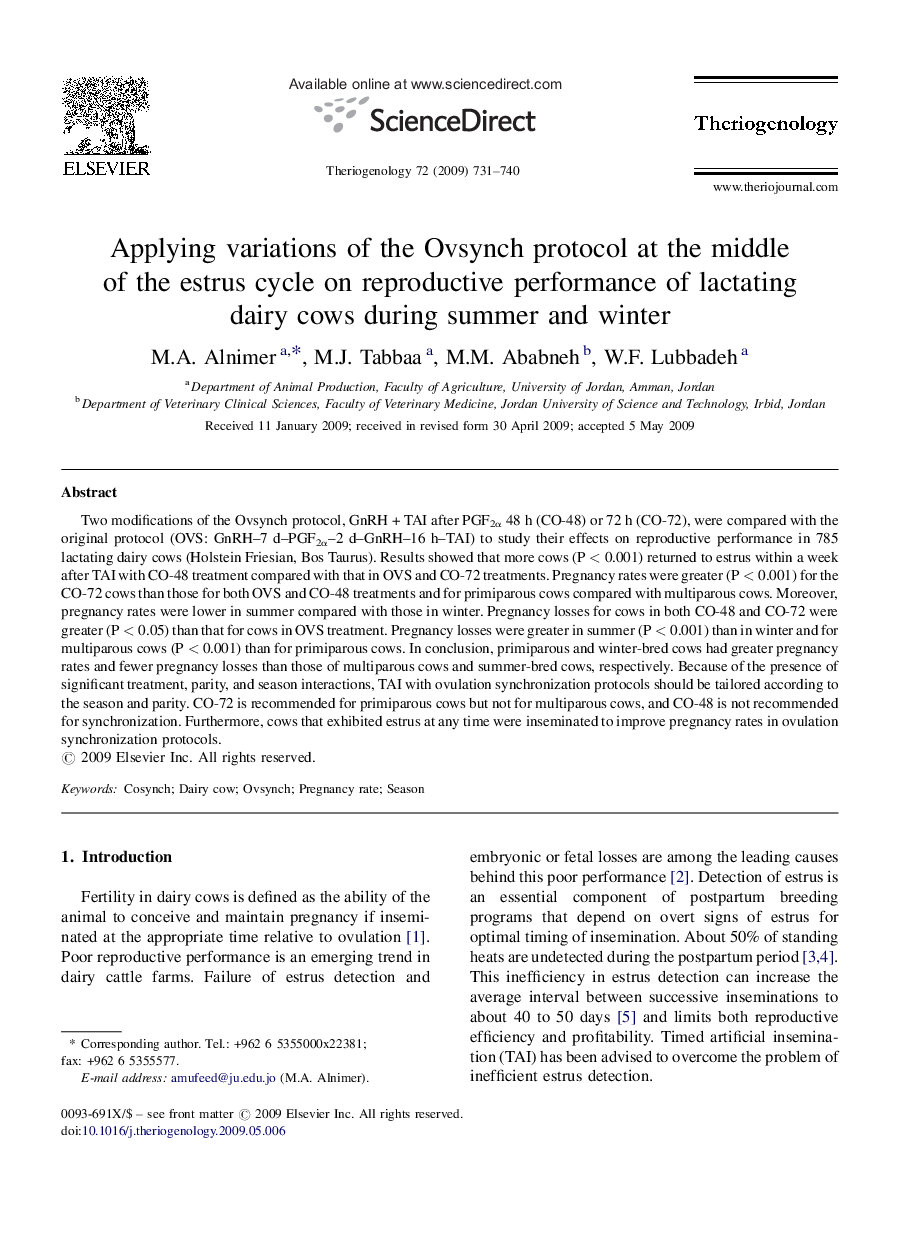| Article ID | Journal | Published Year | Pages | File Type |
|---|---|---|---|---|
| 2095640 | Theriogenology | 2009 | 10 Pages |
Two modifications of the Ovsynch protocol, GnRH + TAI after PGF2α 48 h (CO-48) or 72 h (CO-72), were compared with the original protocol (OVS: GnRH–7 d–PGF2α–2 d–GnRH–16 h–TAI) to study their effects on reproductive performance in 785 lactating dairy cows (Holstein Friesian, Bos Taurus). Results showed that more cows (P < 0.001) returned to estrus within a week after TAI with CO-48 treatment compared with that in OVS and CO-72 treatments. Pregnancy rates were greater (P < 0.001) for the CO-72 cows than those for both OVS and CO-48 treatments and for primiparous cows compared with multiparous cows. Moreover, pregnancy rates were lower in summer compared with those in winter. Pregnancy losses for cows in both CO-48 and CO-72 were greater (P < 0.05) than that for cows in OVS treatment. Pregnancy losses were greater in summer (P < 0.001) than in winter and for multiparous cows (P < 0.001) than for primiparous cows. In conclusion, primiparous and winter-bred cows had greater pregnancy rates and fewer pregnancy losses than those of multiparous cows and summer-bred cows, respectively. Because of the presence of significant treatment, parity, and season interactions, TAI with ovulation synchronization protocols should be tailored according to the season and parity. CO-72 is recommended for primiparous cows but not for multiparous cows, and CO-48 is not recommended for synchronization. Furthermore, cows that exhibited estrus at any time were inseminated to improve pregnancy rates in ovulation synchronization protocols.
